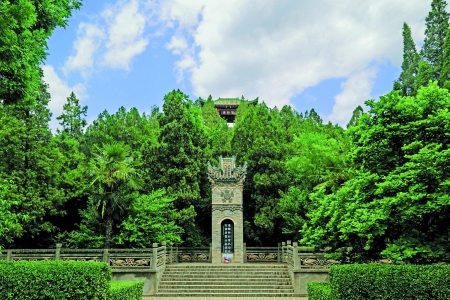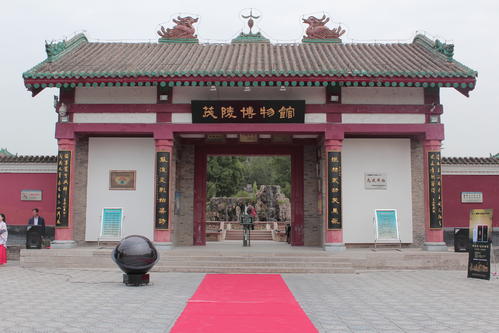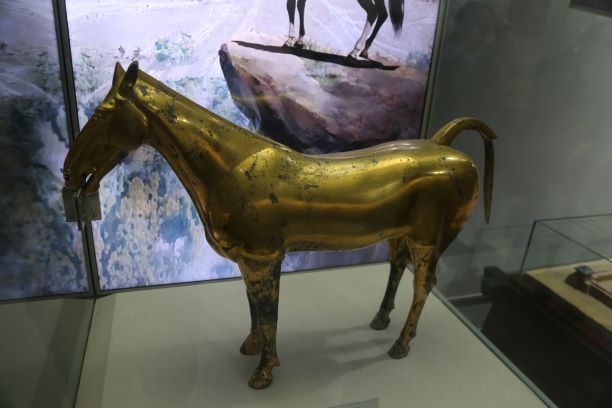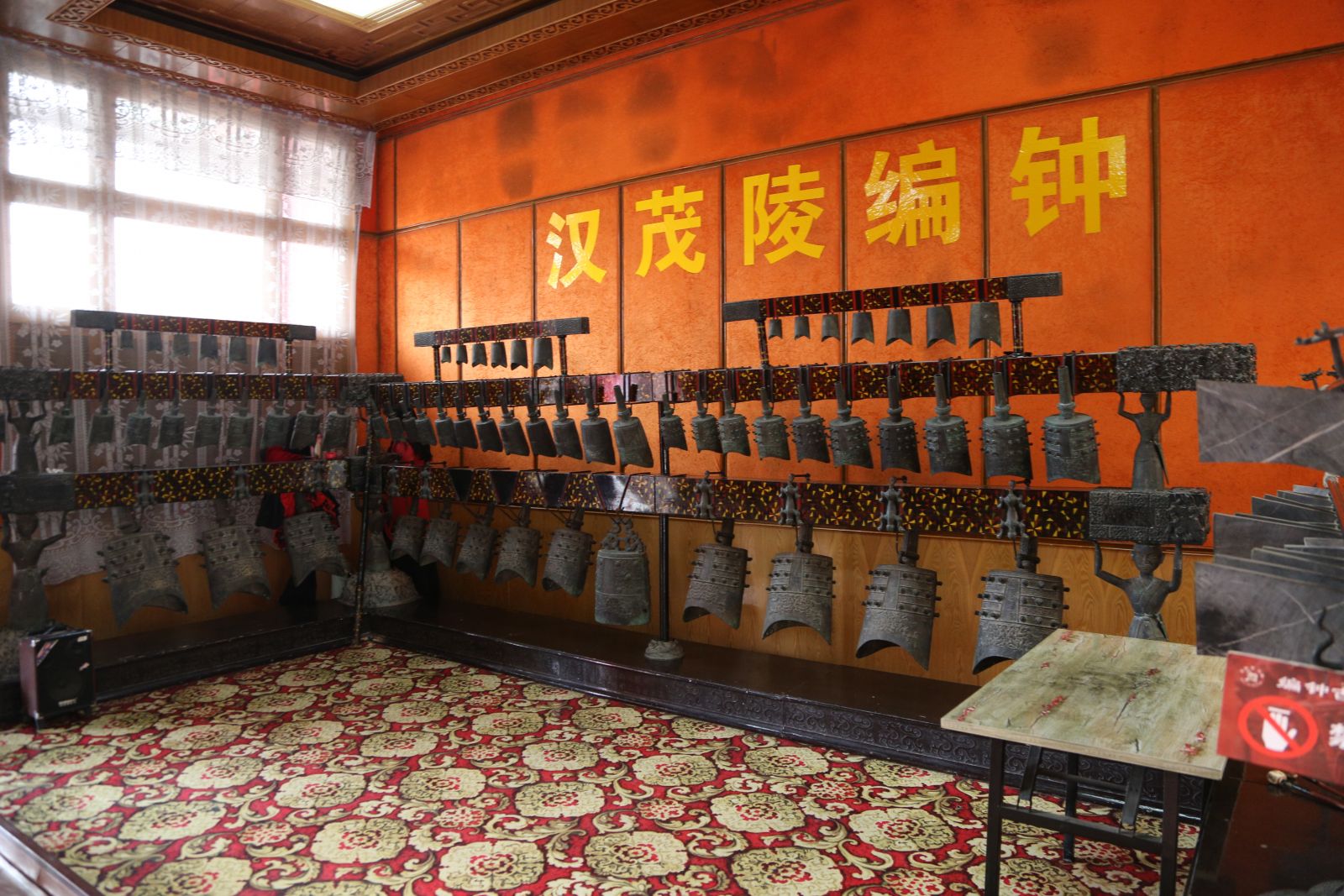Chinese Name: 茂陵 Pronunciation: mào líng
Recommended Time for Visit: 2-3 Hours
Occupied Area: About 50 square kilometers
Building Time: 87BC
Best Visiting Season: Spring to Autumn (March 1st to November 30th)
Address: Maoling Village, Nanwei Town, Xingping, Xianyang City, Shaanxi Province
Building Function: The burial place of Emperor Wudi of the Western Han Dynasty (202BC-8AD)
| Tickets | Peak Season (March 1st to November 30th) |
Low Season (December 1st to February 28th) |
| Joint Ticket (including the Maoling Mausoleum and the Maoling Museum) | CNY 75 | CNY 55 |
Free for children under 1.2 meters, seniors aged 65 or older (valid certificates required).
| Attractions | All Year Round |
| Maoling Mausoleum | 9:00-17:00 |
| Maoling Museum | 9:00-17:00 |

Located in the northeast of Xingping City, about 15 kilometers away from xianyang City, the Maoling Mausoleum is the tomb of Emperor Wudi (156BC-87BC) of the Western Han Dynasty. With the largest scale, the longest time for construction, and the richest burial contents among the mausoleums of emperors of the Western Han Dynasty, the Maoling Mausoleum is praised as “the Chinese Pyramid”.
Started in 139BC, the second year after Emperor Wudi was enthroned, it took as long as 53 years to complete. The Maoling Mausoleum is not isolated as some subordinate tombs of imperial concubines, generals, and nobles that scatter around. Now some of the unearthed cultural relics are exhibited in the Maoling Museum.
Emperor Wudi is one of the most influential emperors who have the longest reign, the most accomplishments, and left precious and cultural heritages in Chinese history. During his reign, the Western Han Dynasty reached the height of its national power, besides, the famous Silk Road was open, and thereafter the trade with Central Asia and beyond that area started.

With a very long history, the construction of Maoling Mausoleum started in 139BC and ended in 87BC with more than 3000 builders and craftsmen. Every year one-third of the government tax was spent on the construction of the tomb.
In 87BC, Emperor Wudi died and was buried in the Maoling Mausoleum with a huge number of burial objects.
Since the founding of the People's Republic of China in 1949, the government has invested a large amount of money in the protection and maintenance of the Maoling Mausoleum.
In 1961, the Maoling Mausoleum was listed in the first batch of “Major Historical and Cultural Sites Protected at the National Level”.
In 1979, the Maoling Museum was established.
In 2000, the Maoling Mausoleum was officially approved as the first batch of National 4A Tourist Attractions by the National Tourism Administration.

Located near the mausoleum of Emperor Wudi, the Maoling Museum was built on the site of the tomb of Huo Qubing (a very famous general in the Western Han Dynasty) and opened to the public in 1979. It houses many unearthed cultural relics, which include large stone sculptures used to be placed before the tomb of Huo Qubing and a large number of burial objects excavated from the subordinate tombs around the mausoleum of Emperor Wudi.

The most famous and impressive stone carving in the museum is “Hun Invader Hoofed by Warhorse”, which was originally placed in front of Huo Qubing’s tomb. It is also one of the national treasures exhibited in the museum. The stone horse is very strong, holding its head up high while a figure of a Hun invader (a tribal confederation of nomadic peoples) is lying under the horse’s feet in a hopeless expression, which symbolizes how brave the general was in the battle against the Hun aggressors.

Another representative cultural relic in the museum is the “Golden Horse”, unearthed from a burial pit near the tomb of Princess Pingyang, the elder sister of Emperor Wudi. Measured 62cm high and 76cm long, it is the largest gilded horse ever found in China. It was cast in bronze and gilded in the way called mercury gilding. With a slender body and strong muscles, the “Golden Horse” was made in the form of Akhal-Teke horses that Emperor Wu imported from Central Asia.
Huo Qubing (140BC-117BC) was a young general during the reign of Emperor Wu of the Western Han Dynasty. He led his troops to fight against the Hun invaders many times and finally defeated the aggressors.

Huo was very brave and talented. Unfortunately, he died of illness at the early age of 24. In deep grief, Emperor Wudi ordered to bury Huo beside his mausoleum. To commemorate his outstanding achievements, the mound of Huo Qubing was constructed in the shape of the Qilian Mountain where he defeated the Hun invaders and thereafter the Western Han Dynasty won the Western Regions and became much more powerful. What’s more, many stone carvings were piled on the mound.
Now there are only 16 pieces of stone sculptures left, which include a galloping horse, a bull, a tiger, a wild boar, a lying elephant, a stone man, and a stone frog. The sculptures represent the craftsmanship in the Western Han Dynasty and are of great importance in the history of Chinese art.
the Maoling Mausoleum→ the Maoling Museum
Take No. 1142 bus and get off at the Hanwudi Maoling (汉武帝茂陵) Station. (It is not very convenient to take the bus there, so taking a taxi is recommended.)
No subway goes directly to the Maoling Mausoleum now.
Chinese: 请带我去茂陵。English: Please take me to the Maoling Mausoleum.
If you go to the Maoling Mausoleum from the center of Xi’an (Grand Noble Xi’an), it takes about 90 minutes (about CNY 125).
If you go to the Maoling Mausoleum from Xi’an Xianyang International Airport, it takes about 40 minutes (about CNY 60).
If you go to the Maoling Mausoleum from Xi’an North Railway Station, it takes about 65 minutes (about CNY 130).
If you go to the Maoling Mausoleum from Xi’an Railway Station, it takes about 70 minutes (about CNY 120).
